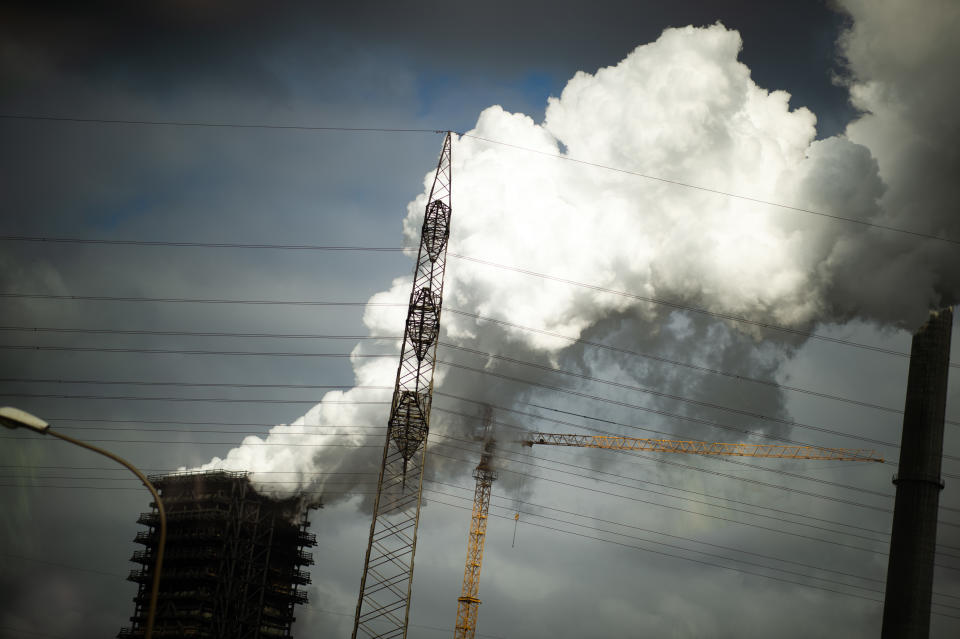Germany predicts better-than-expected 2020 GDP at -5.8%

The German government on Tuesday revised its economic forecast for 2020 and 2021, revealing a more optimistic prediction for the remainder of the year, but a gloomier outlook for the next year.
Economy minister Peter Altmaier said that the government expects a decline of 5.8% for this year, compared to its April forecast of a 6.3% contraction in 2020. The revision puts the 2020 GDP almost on par with the 5.7% GDP contraction in 2009, at the height of the financial crisis.
For 2021, the government predicts GDP growth of 4.4%, significantly lower than the 5.2% predicted in its Spring forecast.
“The recession in the first half of the year was less severe than we had feared,” Altmaier said at a press conference on Tuesday, in Berlin. He added that the economic recovery post-lockdown is going “faster and more dynamically than we dared hope.”
“We have achieved a lot,” Altmaier said. “In comparison with many other European industrial countries…think of Great Britain where the recession twice as bad as in Germany, think of many other countries around us with very serious collapses... in comparison to this we have succeeded in preserving the substance of our economy and keeping jobs.”
Altmaier also said that Germany “can and will” avoid a second nationwide lockdown like in March and April, and would take “targeted and regionally limited measures” to combat rises in infection rates.
The German labour bureau said on Tuesday that number of unemployed had risen by 45,000 in August, from July, to 2.95 million.
While the bureau said that an increase in the number of jobless was normal for August —due to some employment and apprenticeships ending before the summer vacation — ING analysts note that it is still the “worst August performance since reunification” and that the unemployment increase since the start of the coronavirus crisis is “now higher than during the 2008/9 recession.”
The labour office said that applications for the country’s short-time work scheme were to 170 000 in August, a peak of 8 million in April.
READ MORE: Coronavirus: German firms slowly wean off short-hours scheme
The Ifo institute said this week that the number of companies still participating in the furlough schemes, known as “Kurzarbeit,” had declined to 37% in August, from 42% in July.
However, companies in the industrial sector was still in the doldrums, with 80% of metal producers still on short-time hours, and 65% of companies in the automotive industry.
The government recently agreed to extend the Kurzarbeit furlough scheme by an extra year, until December 2021, to help companies avoid layoffs and enable them to keep their staff on standby until the economy revives.
Europe’s largest economy contracted by 9.7% in the second quarter of 2020, compared with the same period in 2019, as the coronavirus pandemic lockdowns drove economic activity to a record quarterly low.
READ MORE: Coronavirus: German economy shrank by 9.7% in second quarter as pandemic peaked
In the April to June quarter, investments excluding construction fell by 19.6%, exports by over 20%, and private consumption by 10.9%. The only growth was in government consumption, which saw an 1.5% quarter-on-quarter increase.
As a whole, Berlin has earmarked over €1tn to help Europe’s largest economy recover from the pandemic. As the pandemic took hold in Spring of this year, the government released its constitutional debt-brake law, and will borrow around €218bn this year.
The debt-averse government is set to keep borrowing next year too to help the economy weather the ongoing damage from the pandemic.
"Next year we will continue to be forced to suspend the debt rules and spend considerable funds to protect the health of citizens and stabilise the economy," Olaf Scholz, the finance minister and Angela Merkel’s vice-chancellor, said in an interview in August.

 Yahoo Finance
Yahoo Finance 